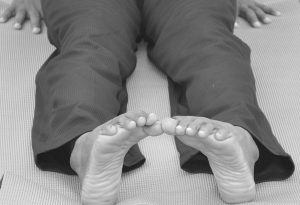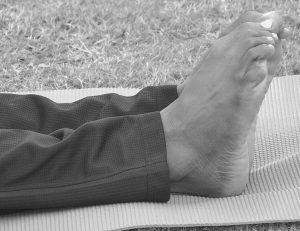
Menu
Close
- Home
- 50 Hrs – Somatic Yoga Teacher Training Certificate Course
- 200 Hrs Yin Yoga Teacher Training Certificate Course
- Psychotherapeutic Yoga Therapy Foundations Course
- Karuna Yoga Ashram
- Certificate Course in Dinacharya(Ayurvedic Daily Routine)
- Emotion Management Training
- Ayurveda for Healthy Life Certificate Course
- Breathwork Teacher Training Certificate Course
- Kids Yoga Teacher Training Certificate Course
- Ashtanga Yoga of the Yoga Sutras
- Yoga Teacher Training For Trauma, Depression and Anxiety
- Complete Eye Yoga Course: Improve Your Eyesight
- 100 Hrs Prenatal & Postnatal Yoga Teacher Training Course
- Yoga Life Coach Certification – Yoga Teacher Training
- Pranayama & Meditation Teacher Training Certificate Course
- Partner Yoga Certificate Course
- Diet and Nutrition Certificate Course
- Meditation & Yoga Nidra Certificate – Yoga Alliance YACEP
- Corporate Yoga Teacher Training
- Gentle Yoga Teacher Training Certificate Course
- Anatomy of Yoga Breathing – Yoga Alliance YACEP
- Psychotherapeutic Yoga Therapy Foundations Course
- 200 Hr – Vinyasa Yoga Teacher Training Certificate Course
- 200 Hr – Hatha-Vinyasa Yoga Teacher Training Course
- 200 Hr – Hatha Yoga Teacher Training Course
- Yoga Internship Program
- Yoga Teacher Mentorship
- 300 Hour – Diploma in Yoga Therapist Teacher Training Certificate Course
- Ayurveda Certificate Course
- SMET(Self-Management of Excessive Tension) Certificate Course
- Mudra Therapy Certification Course (Online/Offline)
- Naturopathy Certificate Course
- Biomechanics & Alignments of Sun Salutations – All Variations
- About Us
- TTC Courses
- Yoga Foundation Certification Course (YFC) Level – 1
- RYT – 200 Hr Yoga TTC Intensive Level – 2
- TTC – 200 Hr (Level – 2) Weekend Intensive Level – 2
- One Month Yoga TTC RYT – 200 HR Intensive Level – 2
- RYT – 300 Hr Yoga ATTC Level – 1
- RYT – 300 Hr Yoga ATTC Level – 2
- RYT – 500 Hr Yoga ATTC
- ATTC – 800 Hr Yoga Course
- TTC – 100 Hr Yoga Teacher Training
- TTC – 50 Hr Yoga Teacher Training Course
- Yoga Therapy Online/Offline
- 50 Hr – Advanced Hatha Yoga Teacher Training Course
- 50 Hr – Hatha-Vinyasa Yoga Teacher Training Course
- 50 Hr – Restorative Yoga Teacher Training Certificate Course
- 50 Hr – Vinyasa Yoga Teacher Training Certificate Course
- 50 Hr – Ashtanga Yoga Teacher Training Certificate Course
- 50 Hr – Yin Yoga Teacher Training Certificate Course
- 50 Hr – Vinyasa-Hatha Yoga Teacher Training Course
- Online/Offline 10 Hours – Yoga for Anxiety & Depression Certificate Course
- Online/Offline 10 Hours – Yoga for Digestive System Certificate Course
- Online/Offline 10 hours – Yoga for Arthritis Certificate Course
- Online/Offline 10 hours – Yoga for Respiratory Ailments Certificate Course
- Online/Offline 10 hours – Yoga for Hypertension and Heart Diseases Certificate Course
- Online/Offline 10 Hours – Yoga for Back Pain Certificate Course
- Online/Offline 10 Hours – Yoga for Diabetes Mellitus Certificate Course
- Fees
- Payment
- YACEP
- Beginners Level
- Beginners Yoga Course
- Hatha Yoga Teacher Training
- Sanskrit Yoga Mantra Chanting Course
- Yoga Philosophy Course
- Asana, Pranayama, Mudra, and Bandha Course
- Yoga Pranic Energization Technique (PET) Certification Course
- 50 Hrs – Yoga Nidra Teacher Training Certification Course: The Art of Relaxation
- SMET (Self-Management of Excessive Tension) Certificate Course
- 10 Hrs Meditation Certificate Teacher Training Certificate Course
- Mind Sound Resonance Technique (MSRT)
- Yoga for Beginner’s Course
- 10 Hrs Jyothi Trataka Teacher Training Certificate Course
- Shat-Karma (Detoxification Course) Teacher Training Certification Course
- Yogic Suksma Vyayama
- Pranayama, Mudra, Bandha & Meditation Teacher Training Certificate Course
- Yoga, Anatomy & Physiology Course
- Mudra & Pranayama Course
- Pranayama Teacher Training Certificate Course
- Mudra Certificate Course
- Pranayama Teacher Training
- Patanjali Yoga Sutra Course
- Advanced Level
- Yoga Class Sequencing Teacher Training
- 10 Hrs Art of Adjustment & Asana Alignment Certificate Course
- 12 Hrs Backward Bending and Balancing Asana Certificate Course
- Yoga Teaching, Training and Techniques Certificate Course
- Asana and Kinesiology Teacher Training
- Yoga Techniques & Teaching Methodology Teacher Training Certificate Course
- Asana and Bio-Mechanism Teacher Training
- Asana Alignment & Verbal Cues Teacher Training Certificate Course
- Asana & Alignment Certificate Course
- 12 Hours – Beginners Yoga Teacher Training Certificate Course
- 12 Hours – Hatha Yoga Teacher Training Certificate Course
- Online/Offline 10 hours – Yoga Philosophy Certificate Course
- 12 hours – Asana, Pranayama, Mudra, and Bandha Certificate Course
- Pranic Energization Technique (PET)
- Yoga Nidra Certificate Course
- CYCLIC MEDITATION
- Mind Sound Resonance Technique (MSRT) Certificate Course
- Trataka (Eyes Cleansing)
- Online/Offline 12 Hours – Shat-Karma (Detoxification Course) Teacher Training Certification Course
- 12 – Hours Yogic Suksma Vyayama Teacher Training Course
- Online/Offline 12 Hrs – Pranayama, Mudra, Bandha & Meditation Certificate Course
- Online/Offline 12 Hrs – Pranayama, Mudra, Bandha & Meditation Certificate Course
- Online/Offline 12 hours – Yoga, Anatomy & Physiology Certificate Course
- Online/Offline 12 Hrs – Mudra & Pranayama Certificate Course
- 10 Hours – Yoga Mantra Chanting Certificate Course
- Online/Offline 12 Hrs – Mudra Certificate Course
- Pranayama Teacher Training Certificate Course
- 12 hours – Patanjali Yoga Sutra Certificate Course
- 10 Hrs – Meditation Certificate Course
- 10 Hours – Yoga Class Sequencing Teacher Training Course
- 10 Hr – Art of Adjustment & Asana Alignment Courses
- Backward Bending and Balancing Asana Course
- 12 Hr – Yoga Teaching, Training and Techniques
- Offline/Online 12 hours- Asana and Kinesiology Teacher Training Course
- 12 Hours – Yoga Teaching Methodology
- Online/Offline 12 hours- Asana and Bio-Mechanism Teacher Training Course
- Online/Offline 10 Hours – Asana Alignment & Verbal Cues Teacher Training Course
- Offline/Online 10 Hr – Asana & Alignment Certificate Course
- Beginners Level
- Retreat
- Yoga, Health and Wellness Retreat in Bangalore
- Yoga for Wellness
- Weekend Yoga And Meditation Retreat
- Yoga and Meditation Retreat in Bangalore
- Yoga for Stress Management
- Yoga Stress Management Retreat in Bangalore
- Yoga Therapy Retreat in Bangalore
- Weekend Yoga And Meditation Retreat
- Yoga Retreat in Bangalore
- Yoga Nidra Retreat in Bangalore
- Blog
- Project Work – Guidelines
- Yoga Question Bank
- Student Assessment
- Yoga Recommended Book
- Yoga Question and Answer
- How to Register with Yoga Alliance
- Yoga Medical Fitness Certificate
- Yoga Enquiry Form / Health Form
- asana gallery
- PROJECT WORK – TTC STUDENT’S
- How to Register with Yoga Alliance : Step-by-Step Instructions for Teachers
- Review – Chess, South Korea
- Google Review – Yoga Teacher Training Course, Bangalore , India
- Testimonial
- FAQ
- Contact Us
- Chennai
- Mysore
- Pondicherry
- Yoga for Digestive System – tripanee
- Yoga for Diabetes Mellitus Course – trip
- Yoga for Arthritis – tripanee
- Yoga for Respiratory Ailments – tripanee
- Yoga for Back Pain – Tripanee
- Yoga for Hypertension and Heart Diseases – tripanee
- Yoga for Anxiety & Depression – Tripanee
- Yogic Suksma Vyayama – tripanee
- Tripaneer
- Mudra & Bandha Certificate Course
- Patanjali Yoga Sutra Course – Tripanee
- Asana, Pranayama, Mudra, and Bandha – Tripanee
- Kinesiology and Yoga Teacher Training Course – Tripanee
- Yoga Mantra Chanting – Tripanee
- Asana and Bio-Mechanism -tripanee
- Yoga Philosophy Course – tripanee
- Pranayama & Meditation – Tripanee
- Self-Paced Online 200-Hr TTC – Tripaneer
- 200-Hour Online 30 Day Intensive TTC
- 200-Hour Online 20 Day High Intensive Yoga Teacher Training Certificate Course – Tripaneer
- 100 Hr – Yoga Therapy Teacher Training Certificate Course – Level – 1
- 100 Hr – Yoga Therapy Teacher Training Certificate Course – Level – 2
- Online Self-Paced 50 – Yin Yoga Teacher Training Certificate Course – trip
- Online Self-Paced 50 Hr – Restorative Yoga Teacher Training Certificate Course
- 100 Hr – Online Hatha-Vinyasa Yoga
- 100 Hours Online – Vinyasa Yoga
- 100 Hours Offline/Online – Ashtanga Yoga Teacher Training Certificate Course
- 50 Hr Online – Hatha Yoga Teacher Training Course
- Self-paced Online 300-Hour Yoga Teacher Training Certificate Course – trip
- 500 Hr ATTC
- 50 hours Online – Hatha-Vinyasa
- 50 Hours – Yoga for Digestive System Certificate Course – tripanee
- 50 hours – Yoga for Arthritis Certificate Course – tripanee
- 50 hours – Yoga for Respiratory Ailments Certificate Course – tripanee
- Online 50 Hours – Yoga for Back Pain Certificate Course
- 50 Hours – Yoga for Diabetes Mellitus Certificate Course – tripanee
- 50 hours – Yoga for Hypertension and Heart Diseases Certificate Course – tripanee
- Online Self-Paced 10 Hrs- Mudra & Bandha Certificate Course
- 12 Hr – Patanjali Yoga Sutra Course – Tripanee
- Self-Paced 10-Hour Online Course: Asana, Pranayama, Mudra, and Bandha
- Self-Paced 10-Hour Online Kinesiology and Yoga Teacher Training Course Tripanee
- Online Self-Paced 10 Hr Yoga Mantra Chanting Certificate Course
- Self-Paced 10 Hours Asana and Bio-Mechanism Online Teacher Training tripanee
- Online Self-Paced 10-Hour Yoga Philosophy Course tripanee
- Offline/Online 12 Hrs – Pranayama & Meditation Certificate Course
- Self-Paced Online 200-Hr TTC – Tripaneer
- 200-Hour Online 30 Day Intensive TTC
- 200-Hour Online 20 Day High Intensive Yoga Teacher Training Certificate Course – Tripaneer
- 100 Hr – Yoga Therapy Teacher Training Certificate Course – Level – 1
- 100 Hr – Yoga Therapy Teacher Training Certificate Course – Level – 2
- Online Self-Paced 50 – Yin Yoga Teacher Training Certificate Course - trip
- Online Self-Paced 50 Hr – Restorative Yoga Teacher Training Certificate Course
- 100 Hr – Online Hatha-Vinyasa Yoga
- 100 Hours Online – Vinyasa Yoga
- 100 Hours Offline/Online – Ashtanga Yoga Teacher Training Certificate Course
- 50 Hr Online – Hatha Yoga Teacher Training Course
- Self-paced Online 300-Hour Yoga Teacher Training Certificate Course – trip
- 500 Hr ATTC
- 50 hours Online – Hatha-Vinyasa
- Home
- 50 Hrs – Somatic Yoga Teacher Training Certificate Course
- 200 Hrs Yin Yoga Teacher Training Certificate Course
- Psychotherapeutic Yoga Therapy Foundations Course
- Karuna Yoga Ashram
- Certificate Course in Dinacharya(Ayurvedic Daily Routine)
- Emotion Management Training
- Ayurveda for Healthy Life Certificate Course
- Breathwork Teacher Training Certificate Course
- Kids Yoga Teacher Training Certificate Course
- Ashtanga Yoga of the Yoga Sutras
- Yoga Teacher Training For Trauma, Depression and Anxiety
- Complete Eye Yoga Course: Improve Your Eyesight
- 100 Hrs Prenatal & Postnatal Yoga Teacher Training Course
- Yoga Life Coach Certification – Yoga Teacher Training
- Pranayama & Meditation Teacher Training Certificate Course
- Partner Yoga Certificate Course
- Diet and Nutrition Certificate Course
- Meditation & Yoga Nidra Certificate – Yoga Alliance YACEP
- Corporate Yoga Teacher Training
- Gentle Yoga Teacher Training Certificate Course
- Anatomy of Yoga Breathing – Yoga Alliance YACEP
- Psychotherapeutic Yoga Therapy Foundations Course
- 200 Hr – Vinyasa Yoga Teacher Training Certificate Course
- 200 Hr – Hatha-Vinyasa Yoga Teacher Training Course
- 200 Hr – Hatha Yoga Teacher Training Course
- Yoga Internship Program
- Yoga Teacher Mentorship
- 300 Hour – Diploma in Yoga Therapist Teacher Training Certificate Course
- Ayurveda Certificate Course
- SMET(Self-Management of Excessive Tension) Certificate Course
- Mudra Therapy Certification Course (Online/Offline)
- Naturopathy Certificate Course
- Biomechanics & Alignments of Sun Salutations – All Variations
- About Us
- TTC Courses
- Yoga Foundation Certification Course (YFC) Level – 1
- RYT – 200 Hr Yoga TTC Intensive Level – 2
- TTC – 200 Hr (Level – 2) Weekend Intensive Level – 2
- One Month Yoga TTC RYT – 200 HR Intensive Level – 2
- RYT – 300 Hr Yoga ATTC Level – 1
- RYT – 300 Hr Yoga ATTC Level – 2
- RYT – 500 Hr Yoga ATTC
- ATTC – 800 Hr Yoga Course
- TTC – 100 Hr Yoga Teacher Training
- TTC – 50 Hr Yoga Teacher Training Course
- Yoga Therapy Online/Offline
- 50 Hr – Advanced Hatha Yoga Teacher Training Course
- 50 Hr – Hatha-Vinyasa Yoga Teacher Training Course
- 50 Hr – Restorative Yoga Teacher Training Certificate Course
- 50 Hr – Vinyasa Yoga Teacher Training Certificate Course
- 50 Hr – Ashtanga Yoga Teacher Training Certificate Course
- 50 Hr – Yin Yoga Teacher Training Certificate Course
- 50 Hr – Vinyasa-Hatha Yoga Teacher Training Course
- Online/Offline 10 Hours – Yoga for Anxiety & Depression Certificate Course
- Online/Offline 10 Hours – Yoga for Digestive System Certificate Course
- Online/Offline 10 hours – Yoga for Arthritis Certificate Course
- Online/Offline 10 hours – Yoga for Respiratory Ailments Certificate Course
- Online/Offline 10 hours – Yoga for Hypertension and Heart Diseases Certificate Course
- Online/Offline 10 Hours – Yoga for Back Pain Certificate Course
- Online/Offline 10 Hours – Yoga for Diabetes Mellitus Certificate Course
- Fees
- Payment
- YACEP
- Beginners Level
- Beginners Yoga Course
- Hatha Yoga Teacher Training
- Sanskrit Yoga Mantra Chanting Course
- Yoga Philosophy Course
- Asana, Pranayama, Mudra, and Bandha Course
- Yoga Pranic Energization Technique (PET) Certification Course
- 50 Hrs – Yoga Nidra Teacher Training Certification Course: The Art of Relaxation
- SMET (Self-Management of Excessive Tension) Certificate Course
- 10 Hrs Meditation Certificate Teacher Training Certificate Course
- Mind Sound Resonance Technique (MSRT)
- Yoga for Beginner’s Course
- 10 Hrs Jyothi Trataka Teacher Training Certificate Course
- Shat-Karma (Detoxification Course) Teacher Training Certification Course
- Yogic Suksma Vyayama
- Pranayama, Mudra, Bandha & Meditation Teacher Training Certificate Course
- Yoga, Anatomy & Physiology Course
- Mudra & Pranayama Course
- Pranayama Teacher Training Certificate Course
- Mudra Certificate Course
- Pranayama Teacher Training
- Patanjali Yoga Sutra Course
- Advanced Level
- Yoga Class Sequencing Teacher Training
- 10 Hrs Art of Adjustment & Asana Alignment Certificate Course
- 12 Hrs Backward Bending and Balancing Asana Certificate Course
- Yoga Teaching, Training and Techniques Certificate Course
- Asana and Kinesiology Teacher Training
- Yoga Techniques & Teaching Methodology Teacher Training Certificate Course
- Asana and Bio-Mechanism Teacher Training
- Asana Alignment & Verbal Cues Teacher Training Certificate Course
- Asana & Alignment Certificate Course
- 12 Hours – Beginners Yoga Teacher Training Certificate Course
- 12 Hours – Hatha Yoga Teacher Training Certificate Course
- Online/Offline 10 hours – Yoga Philosophy Certificate Course
- 12 hours – Asana, Pranayama, Mudra, and Bandha Certificate Course
- Pranic Energization Technique (PET)
- Yoga Nidra Certificate Course
- CYCLIC MEDITATION
- Mind Sound Resonance Technique (MSRT) Certificate Course
- Trataka (Eyes Cleansing)
- Online/Offline 12 Hours – Shat-Karma (Detoxification Course) Teacher Training Certification Course
- 12 – Hours Yogic Suksma Vyayama Teacher Training Course
- Online/Offline 12 Hrs – Pranayama, Mudra, Bandha & Meditation Certificate Course
- Online/Offline 12 Hrs – Pranayama, Mudra, Bandha & Meditation Certificate Course
- Online/Offline 12 hours – Yoga, Anatomy & Physiology Certificate Course
- Online/Offline 12 Hrs – Mudra & Pranayama Certificate Course
- 10 Hours – Yoga Mantra Chanting Certificate Course
- Online/Offline 12 Hrs – Mudra Certificate Course
- Pranayama Teacher Training Certificate Course
- 12 hours – Patanjali Yoga Sutra Certificate Course
- 10 Hrs – Meditation Certificate Course
- 10 Hours – Yoga Class Sequencing Teacher Training Course
- 10 Hr – Art of Adjustment & Asana Alignment Courses
- Backward Bending and Balancing Asana Course
- 12 Hr – Yoga Teaching, Training and Techniques
- Offline/Online 12 hours- Asana and Kinesiology Teacher Training Course
- 12 Hours – Yoga Teaching Methodology
- Online/Offline 12 hours- Asana and Bio-Mechanism Teacher Training Course
- Online/Offline 10 Hours – Asana Alignment & Verbal Cues Teacher Training Course
- Offline/Online 10 Hr – Asana & Alignment Certificate Course
- Beginners Level
- Retreat
- Yoga, Health and Wellness Retreat in Bangalore
- Yoga for Wellness
- Weekend Yoga And Meditation Retreat
- Yoga and Meditation Retreat in Bangalore
- Yoga for Stress Management
- Yoga Stress Management Retreat in Bangalore
- Yoga Therapy Retreat in Bangalore
- Weekend Yoga And Meditation Retreat
- Yoga Retreat in Bangalore
- Yoga Nidra Retreat in Bangalore
- Blog
- Project Work – Guidelines
- Yoga Question Bank
- Student Assessment
- Yoga Recommended Book
- Yoga Question and Answer
- How to Register with Yoga Alliance
- Yoga Medical Fitness Certificate
- Yoga Enquiry Form / Health Form
- asana gallery
- PROJECT WORK – TTC STUDENT’S
- How to Register with Yoga Alliance : Step-by-Step Instructions for Teachers
- Review – Chess, South Korea
- Google Review – Yoga Teacher Training Course, Bangalore , India
- Testimonial
- FAQ
- Contact Us
- Chennai
- Mysore
- Pondicherry
- Yoga for Digestive System – tripanee
- Yoga for Diabetes Mellitus Course – trip
- Yoga for Arthritis – tripanee
- Yoga for Respiratory Ailments – tripanee
- Yoga for Back Pain – Tripanee
- Yoga for Hypertension and Heart Diseases – tripanee
- Yoga for Anxiety & Depression – Tripanee
- Yogic Suksma Vyayama – tripanee
- Tripaneer
- Mudra & Bandha Certificate Course
- Patanjali Yoga Sutra Course – Tripanee
- Asana, Pranayama, Mudra, and Bandha – Tripanee
- Kinesiology and Yoga Teacher Training Course – Tripanee
- Yoga Mantra Chanting – Tripanee
- Asana and Bio-Mechanism -tripanee
- Yoga Philosophy Course – tripanee
- Pranayama & Meditation – Tripanee
- Self-Paced Online 200-Hr TTC – Tripaneer
- 200-Hour Online 30 Day Intensive TTC
- 200-Hour Online 20 Day High Intensive Yoga Teacher Training Certificate Course – Tripaneer
- 100 Hr – Yoga Therapy Teacher Training Certificate Course – Level – 1
- 100 Hr – Yoga Therapy Teacher Training Certificate Course – Level – 2
- Online Self-Paced 50 – Yin Yoga Teacher Training Certificate Course – trip
- Online Self-Paced 50 Hr – Restorative Yoga Teacher Training Certificate Course
- 100 Hr – Online Hatha-Vinyasa Yoga
- 100 Hours Online – Vinyasa Yoga
- 100 Hours Offline/Online – Ashtanga Yoga Teacher Training Certificate Course
- 50 Hr Online – Hatha Yoga Teacher Training Course
- Self-paced Online 300-Hour Yoga Teacher Training Certificate Course – trip
- 500 Hr ATTC
- 50 hours Online – Hatha-Vinyasa
- 50 Hours – Yoga for Digestive System Certificate Course – tripanee
- 50 hours – Yoga for Arthritis Certificate Course – tripanee
- 50 hours – Yoga for Respiratory Ailments Certificate Course – tripanee
- Online 50 Hours – Yoga for Back Pain Certificate Course
- 50 Hours – Yoga for Diabetes Mellitus Certificate Course – tripanee
- 50 hours – Yoga for Hypertension and Heart Diseases Certificate Course – tripanee
- Online Self-Paced 10 Hrs- Mudra & Bandha Certificate Course
- 12 Hr – Patanjali Yoga Sutra Course – Tripanee
- Self-Paced 10-Hour Online Course: Asana, Pranayama, Mudra, and Bandha
- Self-Paced 10-Hour Online Kinesiology and Yoga Teacher Training Course Tripanee
- Online Self-Paced 10 Hr Yoga Mantra Chanting Certificate Course
- Self-Paced 10 Hours Asana and Bio-Mechanism Online Teacher Training tripanee
- Online Self-Paced 10-Hour Yoga Philosophy Course tripanee
- Offline/Online 12 Hrs – Pranayama & Meditation Certificate Course
- Self-Paced Online 200-Hr TTC – Tripaneer
- 200-Hour Online 30 Day Intensive TTC
- 200-Hour Online 20 Day High Intensive Yoga Teacher Training Certificate Course – Tripaneer
- 100 Hr – Yoga Therapy Teacher Training Certificate Course – Level – 1
- 100 Hr – Yoga Therapy Teacher Training Certificate Course – Level – 2
- Online Self-Paced 50 – Yin Yoga Teacher Training Certificate Course - trip
- Online Self-Paced 50 Hr – Restorative Yoga Teacher Training Certificate Course
- 100 Hr – Online Hatha-Vinyasa Yoga
- 100 Hours Online – Vinyasa Yoga
- 100 Hours Offline/Online – Ashtanga Yoga Teacher Training Certificate Course
- 50 Hr Online – Hatha Yoga Teacher Training Course
- Self-paced Online 300-Hour Yoga Teacher Training Certificate Course – trip
- 500 Hr ATTC
- 50 hours Online – Hatha-Vinyasa
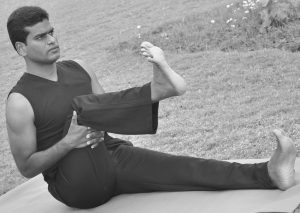
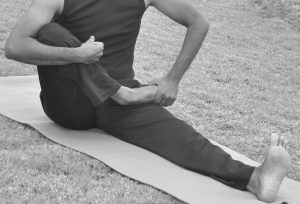
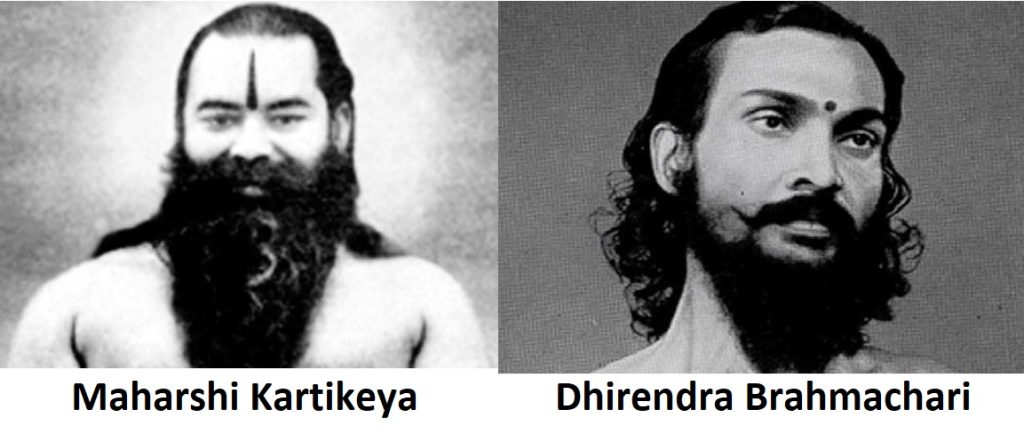 Initiation into Sukshma Vyayama techniques from Maharshi Kartikeya, the prophet and sacred great yogi who was his Master. In the preface to the book “Yogic Sukshma Vyayama” Dhirendra Brahmachari wrote about his precious Guru. Deep knowledge made him the unique expert of human characters, of their abilities and possibilities. From Maharshi Kartikeya, Dhirendra Brahmachari received a precept to spread knowledge about Sukshma Vyayama. The invaluable merit of Dhirendra Brahmachari is that he managed to accumulate knowledge in the convenient form, to make it open and understandable for the audience everywhere. The book “Yogic Sukshma Vyayama” was one of the first books about yoga published in.
Initiation into Sukshma Vyayama techniques from Maharshi Kartikeya, the prophet and sacred great yogi who was his Master. In the preface to the book “Yogic Sukshma Vyayama” Dhirendra Brahmachari wrote about his precious Guru. Deep knowledge made him the unique expert of human characters, of their abilities and possibilities. From Maharshi Kartikeya, Dhirendra Brahmachari received a precept to spread knowledge about Sukshma Vyayama. The invaluable merit of Dhirendra Brahmachari is that he managed to accumulate knowledge in the convenient form, to make it open and understandable for the audience everywhere. The book “Yogic Sukshma Vyayama” was one of the first books about yoga published in.